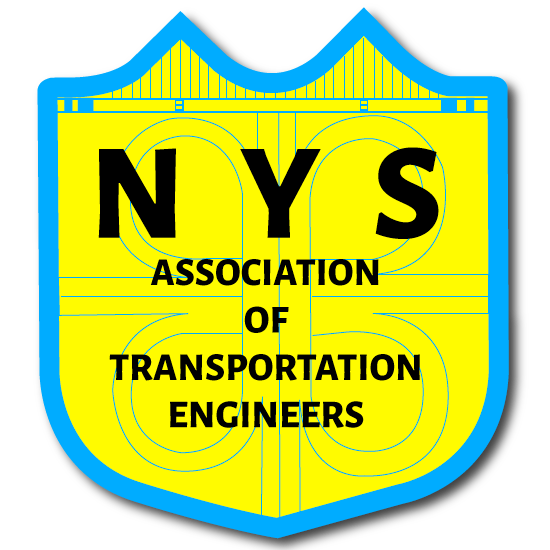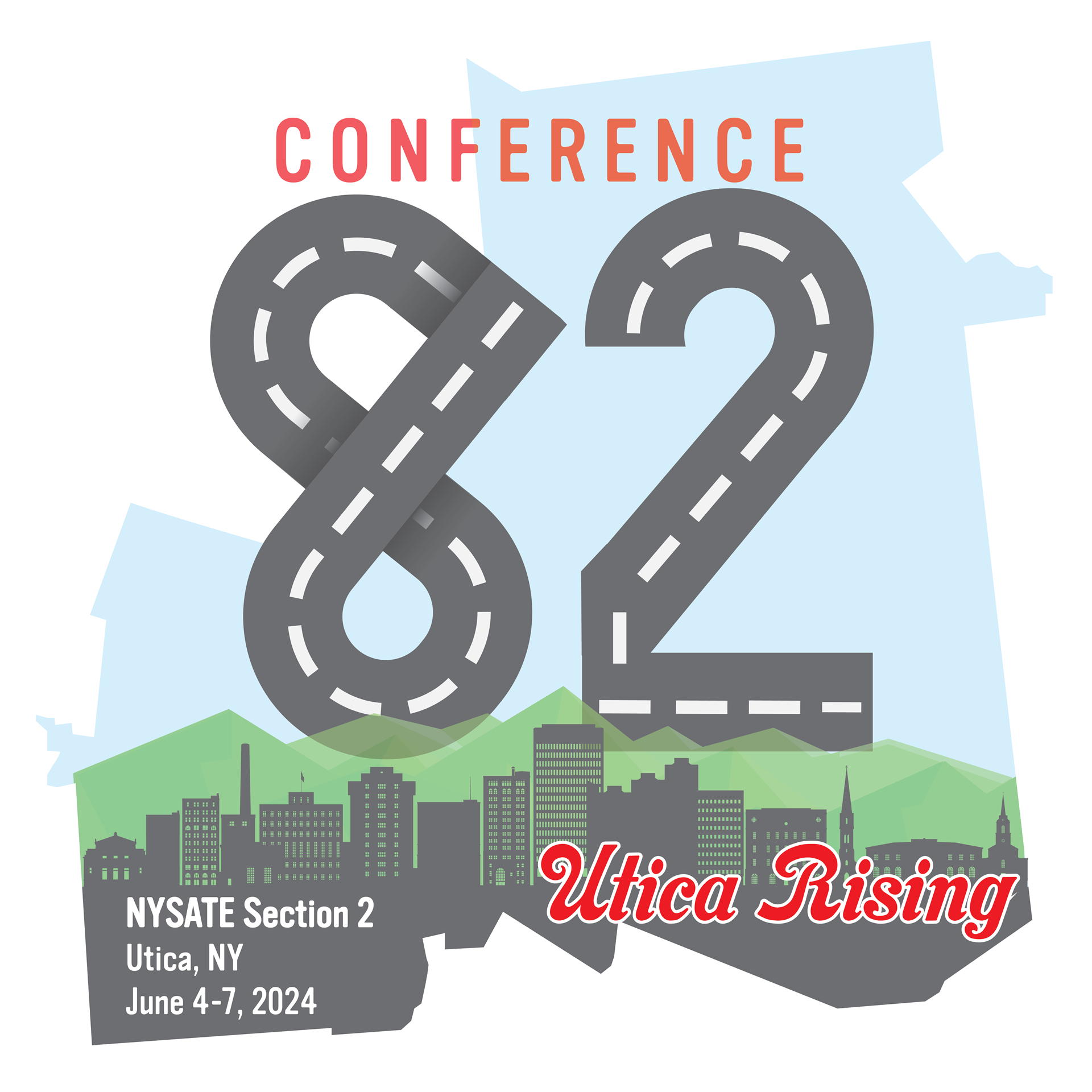- About
- Conference 82
- Technical Sessions
- Technical Descriptions - Wed
Technical Program
Wednesday - June 5, 2024
Modernization of Briarcliff-Peekskill Parkway, Engaging the Public
Scott Geiger, PE – WSP
Katherine Craig, PE, PTOE – WSP
The presentation will introduce the audience to the Briarcliff Peekskill Parkway transportation corridor study that was completed earlier this year. The course intends to highlight and explain the importance of engaging stakeholders and the public to build consensus. The study engaged stakeholders and the public early and often. The study provided democratic and representative opposing points of view that helped the engineering team achieve a basic level of local input to the transportation planning and development of concepts.
Beaver Island Parkway over Niagara Thruway - Case Study on Rapid Project Delivery
Robert Fleming, PE – Colliers Engineering
David Vosburgh, PE – NYS Thruway
The presentation will cover the recently completed $8.3M replacement of the NYSTA Beaver Island Parkway Bridge over the Niagara Thruway (I-190) in Grand Island, NY. The design schedule of the new bridge, which began in December 2021 was accelerated after the existing bridge was featured in a November 2021 Buffalo area news article about the poor condition of local infrastructure. As a result of the article, public and political pressure to complete the bridge replacement accelerated the letting date from August 2024 to August 2022, allowing less than nine months to complete design phases 1 through 7.
Using AI to Drive Decision Support on a Smart Corridor
Matt Davis, PE, PTOE, ITS Practice Lead – Stantec
This presentation will discuss the implementation of an AI-Driven Decision Support System (DSS) on the I-24 SMART corridor in Tennessee. Stantec is teamed with Vanderbilt and the Southwest Research Institute (SwRI) to enhance TMC operations by reducing the burden on operators while providing better traveler information and traffic management via advanced data processing and decision making.
Leveraging Big Traffic Data for Improving Traffic Operations & Safety
Dr. Abolfazl Karimpour, Assistant Professor – SUNY Polytechnic Institute
Mobility and safety of motorists and vulnerable road users are the essential objectives of every transportation network. Departments of Transportation (DOTs) and Metropolitan Planning Organizations (MPOs) are required by Congress to periodically monitor and evaluate the safety and mobility performance of their roadways and have invested a great amount of funding in Intelligent Transportation System (ITS) technologies, especially smart traffic sensor technologies to better manage traffic and collect high-resolution data. This presentation will discuss some of the available big traffic data, innovative data-driven approaches, and ITS technologies to develop standards, guidelines, and frameworks for improving the operations and safety of the regional roadway.
NYC Connected Vehicle Pilot Deployment: Challenges and Lessons Learned
Samuel Sim, PE, Senior ITS Engineer – Stantec
New York City, Wyoming, and Tampa Hillsborough Expressway Authority (THEA) were selected by USDOT to demonstrate the benefits of Connected Vehicle (CV) technology. For NYC, the purpose of its CV pilot deployment program was to reach its Vision Zero goals by reducing the number of vehicle and pedestrian crashes, injuries, and fatalities. The project team implemented safety applications relying on vehicle-to-vehicle (V2V), vehicle-to-infrastructure (V2I), and infrastructure-to-pedestrian (I2P) applications. As the largest CV deployment in an urban environment, the NYC CV pilot revealed many challenges and lessons learned. In addition, it paved the way for additional research and case studies that leverage CV infrastructure as well as development of cellular vehicle-to-everything (C-V2X) deployment plans.
The Engineering Behind a Modular Precast Retaining System
Daniel Thiele, PE – LHV Precast
In a constantly evolving retaining wall industry, challenges arise not only in finding innovative solutions, but in finding ways around rising production costs and labor shortages. Finding a reliable solution to these obstacles can be a challenge for producers, designers, and installers. Fully engineered both structurally and geotechnically, Stone Strong delivers intelligent retaining wall solutions that are not only proven, but also reduce installation time, labor, and production costs. This presentation will discuss the advantages of a 24SF, 6000lb modular block system to meet today’s industry challenges.
Preserving History at the Schoharie Crossing Aqueduct
Paul Banks, Historic Site Manager – Schoharie Crossing State Historic Site
Wendell Buckman, PE, Associate – Barton and Loguidice
The Schoharie Creek Aqueduct, constructed as part of the Erie Canal, originally consisted of 14 stone arches for the towing path on the north side of the canal. The project involved performing repairs to the Aqueduct's foundation and stabilization of the structure to preserve the resource. As part of the stabilization efforts, piles were installed to resist the unbalanced thrust of the arch and installation of scour protection. Other repairs were made including repointing the arches. All these were done within the context of providing minimal visual impact on the resource. This presentation will briefly review the history of the crossing leading up to this project as well as the engineering design and construction behind stabilizing this resource. The Engineer, the NYS Office of Parks and Recreation, and the Contractor worked closely together to deliver this successful project.
Timely Data for Timely Decision-Making
David Rettig, PE, Vice President – Sam Schwartz
This is a presentation on how the Port Authority Transportation Safety Improvement Program (TSIP) utilizes its “CRASH” system to mitigate crashes. The Port Authority operates many of the busiest and most critical transportation facilities in the New York City metropolitan region. These facilities include some of the nation’s busiest airports, bridges, tunnels, bus terminal and ports. Over the span of 22 years from 2000 to 2021, the total number of crashes on the roadways of the Port Authority facilities decreased by 53 percent. These dramatic crash reductions have been a result of a systematic safety improvements initiative carried out under the Port Authority’s TSIP. The TSIP continues to meet its goal of providing a safe and efficient roadway network by minimizing the frequency, severity, and risk of motor vehicle crashes at all of the Port Authority’s facilities.
Fiber Reinforcement for Asphalt
Chris Simmons & Garrett Lovett – Forta Asphalt Fiber
Presentation will discuss the benefits of introducing fiber technology into both Warm Mix Asphalt and Hot Mix Asphalt including cost savings and life extension seen in replacing full depth repair of composite overlay joints with a mill/fill containing aramid fiber. Availability in the State and the ease of use by both the producer and the paver will be discussed.
Enhancing Construction Efficiency & Quality: The Role of Concrete
Icaro Mariani, MCE, Manager of Engineering Solutions – Giatec Scientific Inc.
Wireless concrete sensors and the maturity method are reshaping the landscape of concrete construction. Core principles, applications, and benefits of concrete temperature and strength sensors using the maturity methods in concrete construction will be presented. We'll explore how leveraging maturity data enhances quality control, accelerates project timelines, and aligns with designer objectives for strength and durability. An examination of industry practices along with anecdotal and case-study based evidence will provide insights into optimizing concrete curing strategies, achieving robust results, and contributing to the advancement of sustainable and resilient infrastructure.
Key Considerations in the Design of Highway Covers
Cristina Lauzon, PE, Principal Structural Engineer – HNTB
Bernd Hagenah, PhD, Principal Mechanical Engineer – HNTB
There is a major push to reconnect neighborhoods that were divided by major highways during the 1950's and 1960's. One method of reconnection is a structural deck spanning the highway right-of-way. Although the concept of a deck may appear straightforward there are a few considerations, both technical and social, that need to be addressed. The structural challenges include large spans supporting soil for landscaping, new vertical supporting elements for increased loads and complex construction staging. Public perceptions also play a paramount role, from temporary traffic and noise considerations to longer term perceptions of changes in vehicle emission concentrations. These issues and others need to be addressed to have a successful capping project.
Overview of Federal Discretionary Grant Programs under the IIJA
Andrew Reovan, Discretionary Grant Program Coordinator – FHWA
Timothy O'Donoghue, PE, Discretionary Grant Project Coordinator – FHWA
The Bipartisan Infrastructure Law (BIL), aka the Infrastructure Investment and Jobs Act (IIJA) of 2021, introduced a number of new grant funding opportunities for public agencies at all levels and non-profit organizations. This presentation will provide a high-level overview of how grants are awarded and administered in New York, including the process for receiving a grant, roles and responsibilities, and some lessons learned from grantees in the State.
Structural Rehabilitation of Two NYSDOT Culverts & Boston Sewer
Don LeBlanc, PE, President – DLVEWS Inc.
This presentation is an introduction to glass reinforced plastic (GRP) liner technologies focusing on challenging non-circular structures. The presentation begins with a brief comparison of traditional dig and replacement of a structure versus sliplining/reline of the host structure. The presentation will review basic applications and answer design questions that engineers should ask themselves when considering a sewer and/or culvert for a lining candidate. Many project profiles will showcase unique engineering challenges and the versatile solutions used to meet the project parameters. Project details of 3 specific projects will be highlighted including two recently completed NYSDOT owned culverts and a sewer lining for the City of Boston.
Self-leveling Manhole Technology- Protecting the Integrity of Roadways and Minimizing Maintenance Costs
Craig Coggins, Technical Sales Engineer – EJ USA
This presentation will provide an introduction and overview of the self-leveling manhole technology, including its materials, components, functionality, and applications. The attendees will gain an understanding of the roadway problems this technology is designed to address, as well as current progress with the NYSDOT as it relates to this technology.
Design & Construction of New Buffalo Bills Stadium
Bob Steehler, PE – LaBella Assoc.
The presentation will provide an update on the design and construction of the new Buffalo Bills Stadium in Orchard Park, NY and discuss the challenges related to designing and constructing a major sports facility on an aggressive schedule. The new stadium is adjacent to the current stadium and the construction will occur during the 2024 Buffalo Bills season.
Route 13 Connector Road Project
Robert Schiller, PE, PTOE, Project Engineer - Erdman Anthony & Associates
Roger O'Toole, PE, Resident Engineer - Erdman Anthony & Associates
This Chemung County Department of Public Works Locally Administered Federal Aid (LAFA) project involves construction of a new 0.75-mile roadway between NYS Route 13 and Old Ithaca Road in Horseheads, New York. This new roadway will improve access and connectivity from NY I-86 and NY Route 13 to the 500-acre HOST Industrial Facility.
Key elements investigated and designed during the preliminary and final engineering phases included roadway geometry for a new road on new alignment, new bridge construction, floodplain analysis, drainage impacts, levee construction, two at-grade railroad crossings and two modern roundabouts. The project also included improvements along Old Ithaca Road.
Planning and Designing a Successful Pedestrian/Bicycle Way
Bill Sprengnether, RLA, Landscape Architect – Fisher Associates
Steve Godlewski, PE, Transportation Group Manager – Fisher Associates
This presentation will present and discuss best practices and considerations for the planning and development of multi-use trails.

